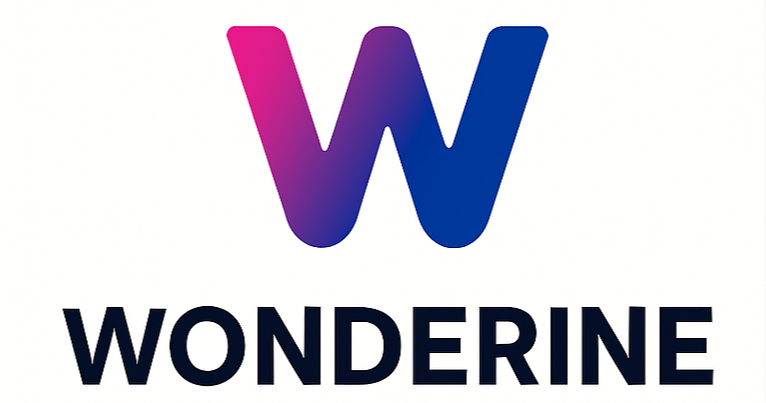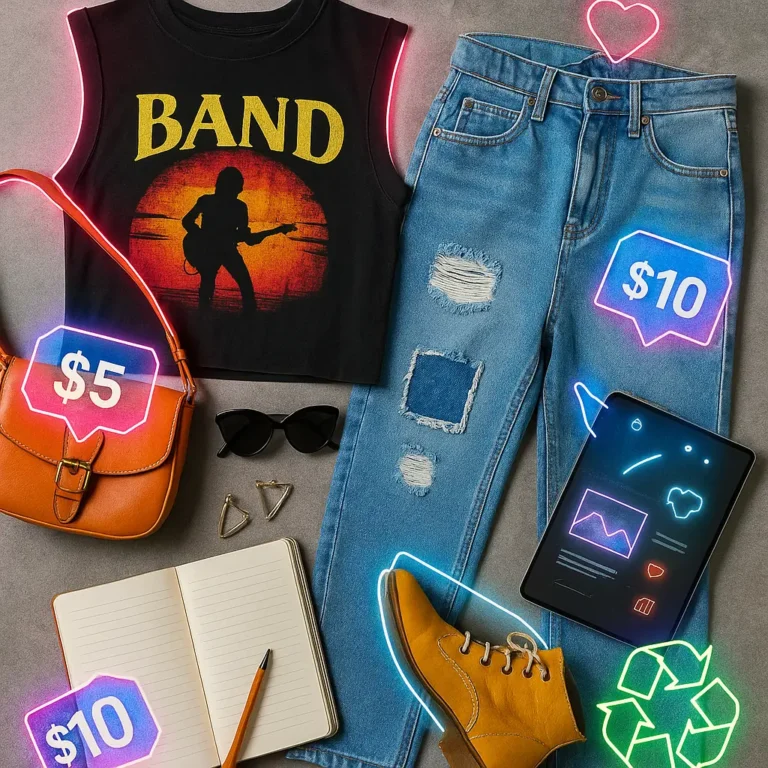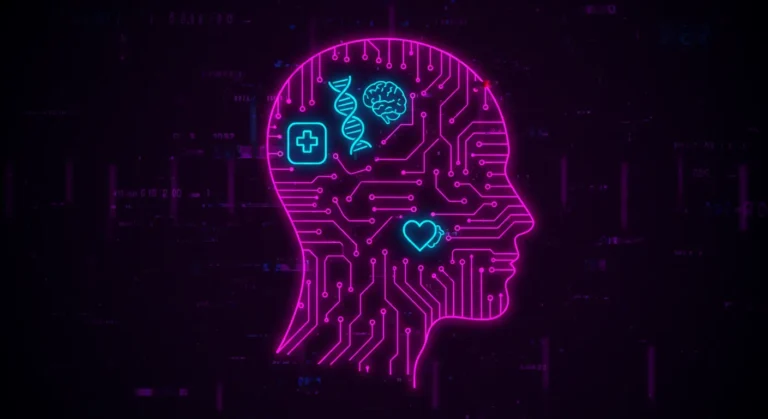Alright, let’s get one thing straight: nostalgia isn’t new. Your parents had their vinyl revivals, you probably had a brief, intense obsession with Tamagotchis or Furbys again a few years back. We get it. The past is a cozy blanket. But what’s bubbling up now? That blanket is being custom-knit by algorithms, and it’s getting hyper-specific.
I’m Nia Spark, your guide through the digital static, and today we’re talking about Algorithmic Nostalgia. This isn’t just your Spotify Wrapped gently reminding you of your emo phase. This is AI predicting, and even creating, nostalgic content so tailored it feels like it was plucked directly from a half-forgotten dream. Think AI-generated mashups of obscure 90s cartoon theme songs with lofi beats, or deepfake videos of your favorite childhood actors reciting new lines in a style that’s just right. It’s that “déjà vu drip” – that unsettlingly familiar feeling for something that never quite existed, but your algorithm (and by extension, your data profile) insists it should.
Is this the ultimate personalized content experience, or are we outsourcing our memories to the machine? Let’s break it down. 👇
The Ghost in the Machine: How AI Became Your Personal Nostalgia DJ 🎧👻

So, how did we get here? It started innocently enough. Recommendation engines on Netflix, Spotify, YouTube – they got really good at learning our tastes. “If you liked Stranger Things, you’ll love these 80s horror deep cuts.” Standard. But now, generative AI (think Midjourney for art, ChatGPT for text, Suno for music) has entered the chat, and it’s a total game-changer.
These AIs aren’t just finding old content; they’re capable of generating new content that feels old, or mashing up existing nostalgia triggers in novel ways.
- Micro-Genre Mashups: Ever craved a synthwave remix of the Reading Rainbow theme? Or a seapunk aesthetic applied to early Windows 95 screensavers? AI can whip that up. It identifies niche cultural artifacts and cross-pollinates them based on your (and millions of others’) engagement patterns.
- “Lost Media” Recreations: The internet LOVES a good lost media hunt (that elusive un-aired cartoon pilot, that one commercial everyone swears they remember). AI can now generate plausible recreations, blurring the lines between what was and what could have been.
- Personalized “What Ifs”: Imagine feeding an AI your favorite childhood movie script and asking it to generate an alternate ending in the style of a different director from that era. Or seeing your younger self “inserted” into iconic scenes. It’s hyper-personalization on steroids.
The result? A constant stream of content that hits those specific, often dormant, nostalgia receptors. It’s not just about remembering the big hits; it’s about the B-sides, the forgotten jingles, the specific texture of the plastic on that one toy. The AI knows the vibes because it’s crunched the data on what makes us collectively (and individually) tick-tock back in time. It’s less about a shared cultural memory and more about a personally curated memory lane, served up 24/7. The “ghost in the machine” isn’t just playing your old favorites; it’s composing new ones in their echo.
The Dopamine Drip: Why We’re Hooked on AI-Generated Throwbacks 🧠✨

Let’s be real: nostalgia feels good. It’s a psychological comfort food. It connects us to simpler times, to our identities, to shared experiences (or at least, what felt like shared experiences). When AI taps into this, it’s hitting a neurological jackpot.
- The Comfort of Familiarity: In a world that feels increasingly chaotic and fast-paced (hello, that’s my brand!), retreating to the known and loved is a powerful draw. AI-generated nostalgia offers an endless supply of this comfort, but with a twist of novelty that keeps it engaging.
- Identity Reinforcement: “Oh, you remember that obscure Saturday morning cartoon transition music too?” It creates micro-communities around these hyper-niche nostalgic artifacts. Finding others who “get” these AI-surfaced or AI-created throwbacks reinforces a sense of belonging, even if the memory itself is being subtly manipulated or entirely fabricated.
- The “Aha!” Moment: There’s a distinct pleasure in encountering something that jogs a deep, forgotten memory. AI is getting incredibly adept at engineering these moments. It’s like an archaeological dig through your own subconscious, curated by a bot. The more obscure and specific, the more potent the “aha!”
But here’s the kicker: it’s a dopamine drip. Each perfectly targeted piece of nostalgic content, whether real or AI-crafted, gives us a little hit. And platforms are designed to keep us scrolling, keep us discovering, keep us feeling. This isn’t just passive remembering; it’s active, AI-driven engagement. We’re not just consuming nostalgia; we’re co-creating it in a feedback loop with the algorithm. The question is, who’s really in control of the remote? Is it genuine sentiment, or are we just Pavlov’s dogs responding to a cleverly engineered digital bell? 🔔
Glitch in the Memory Matrix: The Uncanny Valley of Manufactured Nostalgia 😵💫💾

This is where things get a little… Black Mirror. While a perfectly AI-crafted homage to your favorite pixelated 90s video game can be delightful, there’s a growing sense of the “uncanny valley” when it comes to manufactured nostalgia.
- The “Too Perfect” Problem: Sometimes, AI-generated nostalgic content is too good, too polished. It lacks the charming imperfections, the analog fuzz, the slightly-off printing of genuine retro artifacts. This can create a subtle sense of unease, like looking at a replica that’s almost indistinguishable from the original, but your gut knows something’s off.
- Misremembering and False Memories: If AI is constantly generating “new old” content, how does that affect our actual memories? Could we start incorporating these AI-generated artifacts into our personal histories, believing them to be real? The line between authentic recollection and implanted suggestion gets blurrier by the day. It’s like the Mandela Effect, but supercharged by machine learning.
- Exploitation of Sentiment: Brands are already eyeing this. Imagine targeted ads that don’t just use retro aesthetics but generate new “vintage” commercials featuring products seamlessly inserted into your perceived childhood landscape. It moves from charming throwback to potentially manipulative emotional marketing. “Remember that delicious soda you loved as a kid? (Even though it never existed until our AI focus group dreamed it up based on your demographic profile).” Yikes.
This isn’t to say it’s all doom and gloom. The creative potential is HUGE. But as we wade deeper into AI-curated pasts, we need to be aware of the glitches. The authenticity of our memories, and by extension, our identities, could be subtly rewritten by code. It’s a brave new (old) world, and we need to navigate it with our eyes wide open, questioning the source code of our sentimentality.
Riding the Retro Wave: How Creators & Brands Can Surf the AI Nostalgia Boom 🏄♀️📈
Okay, so the algorithms are getting sentimental. What does this mean for creators, brands, and well, us? This isn’t just a passive trend; it’s an active playground, if you know how to play.
- For Creators: This is a goldmine for remix culture 2.0.
- Hyper-Niche Content: Got a weird obsession with 80s mall muzak or the specific sound design of early CD-ROM games? AI tools can help you create content that speaks to tiny, passionate communities.
- Interactive Storytelling: Imagine “Choose Your Own Adventure” style narratives set in accurately (or creatively inaccurately) recreated historical periods, with AI generating visuals and soundscapes on the fly.
- Reviving “Lost” IP (Ethically!): There’s potential to explore “what if” scenarios with older, perhaps forgotten intellectual property, creating new fan experiences. (Tho, let’s tread carefully with copyright, folks!)
- For Brands: The nostalgia economy is booming, and AI is its new engine.
- Hyper-Personalized Campaigns: Instead of a generic “80s themed” ad, imagine campaigns that subtly reference cultural touchstones specific to narrow age brackets or even individual user data (with consent, plz!).
- “Newstalgic” Product Drops: Create limited-edition products that feel like they’re from a past era but are actually brand new, designed with AI insights into what aesthetics and features evoke that specific nostalgic pull.
- Interactive Brand Archives: Allow users to explore a brand’s history in new ways, perhaps with AI generating “lost” advertisements or product designs from different eras based on the brand’s DNA.
The key is authenticity (even if it’s authentically artificial) and engagement. It’s not just about slapping a retro filter on something. It’s about understanding the emotional core of why certain eras, aesthetics, or artifacts resonate, and then using AI as a tool to tap into that—or even create entirely new “memories” that feel just as potent. The future of branding might just be about mastering the art of the perfectly engineered throwback. And for us users? It means our feeds are about to get a whole lot more… interestingly familiar.
FAQ: Your AI Nostalgia Questions, Answered!
- Q: Is AI literally “hacking” my brain for nostalgia?
- A: Not in a sci-fi chip-implant way (yet! jk… mostly). But it is analyzing vast amounts of data about your preferences, online behavior, and demographic to predict and serve content that will trigger nostalgic feelings. It’s pattern recognition on a massive scale.
- Q: Can AI create false memories?
- A: It’s a concern. While AI isn’t directly implanting memories, the more we’re exposed to highly realistic, AI-generated “retro” content, the more the lines can blur between what we genuinely remember and what we’ve seen generated. It’s the “digital confabulation” effect.
- Q: Is this just another way for companies to sell me stuff?
- A: Let’s be real, that’s definitely part of it. Nostalgia marketing is powerful. But it’s also a reflection of a genuine human desire to connect with the past and a new technological capability to do so in hyper-personalized ways.
- Q: Where is this trend heading?
- A: Expect even more sophisticated AI-generated nostalgic experiences. Think interactive VR environments of your childhood bedroom, AI chatbots that can talk like your favorite retro cartoon characters, or music services that compose entirely new songs in the style of your long-lost favorite bands. The past is the future’s playground!
What’s Your Take on the Deja Vu Drip? 🎤💧
This AI-driven nostalgia wave is massive, and it’s only just beginning to crest. Are you here for AI curating your childhood B-sides, or does the idea of manufactured memories give you the digital creeps? What’s the most bizarrely specific piece of nostalgic content your algorithm has surfaced for you lately?
Spill the tea in the comments below! 👇 Let me know your hottest takes, your weirdest AI encounters, and whether you’re ready to let a bot be your memory DJ.
And hey, if you dig this kind of deep dive into the now-and-next, follow me @NiaSparkPulse on all the socials. You know the vibes. 😉
External Links:
- A look at how recommendation algorithms work: MIT Technology Review on recommendation AI
- On the psychology of nostalgia: American Psychological Association
- Article about Generative AI and creativity: Wired




